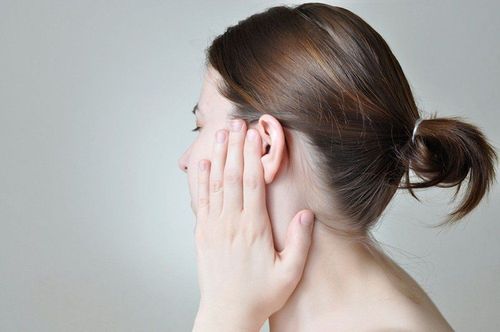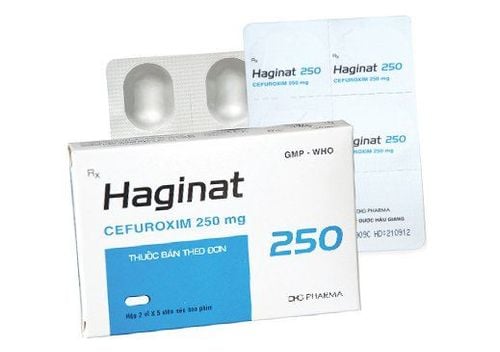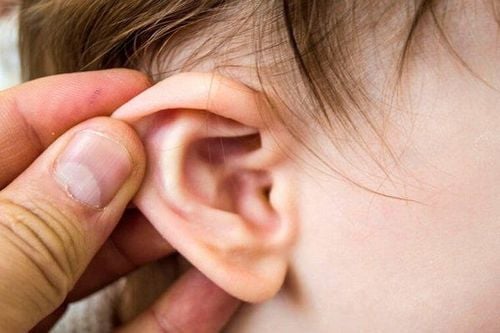This is an automatically translated article.
The article was consulted with Specialist Doctor II Nguyen Van Thai - Ear - Nose - Throat Doctor - Department of Otolaryngology and Head and Neck Surgery - Vinmec Danang International Hospital.1. External examination
Observe and detect changes in the morphology of the skin, deformities in the auricle (congenital), cases of lymphadenitis due to boils or mastoid fistula. The doctor looks at the rim of the ear and looks at the skin in front of the ear and behind the ear.Palpate the mastoid area, ear lobes to know the pain and swelling to distinguish otitis externa alone, the prognosis is better than mastoiditis. Use your thumb to press on classic points such as: mastoid cave, mastoid process, mastoid margin, ear flap to find pain points. Notice the frowning phenomenon when we press on the patient's ear. For adults, when examining the ear, the patient can ask for the following symptoms: pain, hearing loss, tinnitus, dizziness. For young children, we should not rely entirely on their answers because everywhere they touch, they will cry or cry. On the contrary, we appreciate the phenomenon of wincing because of pain when we press on the affected ear. Hand palpation helps us to detect cakedness behind the ear or swollen lymph nodes in front of the ear. We then examine the outer ear canal and tympanic membrane.
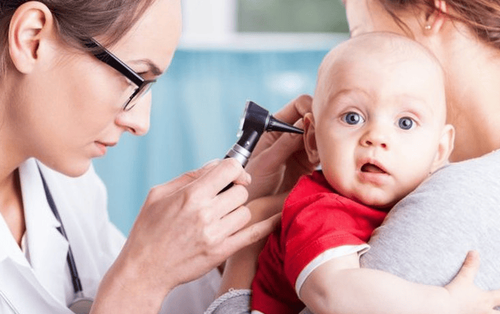
2. Otoscopy and tympanic membrane
If children are otoscopes, they should urinate before examination and ask an assistant to hold them on their lap. If the baby is fussy, struggling, roll the baby in a large towel with 3 people to hold, one person to hold the head, one person to hold the shoulders and arms and one person to hold the lower limbs. Or the mother has to hold the baby on her lap and hold the baby to her chest to reduce fear and struggle.
If the patient is an adult, have them sit across from the physician. The patient turns his head, the direction of the ear being examined is facing the doctor, paying attention to examine the good ear first, the diseased ear later.
The head doctor wears a clar light or a forehead mirror that focuses the light on the ear openings. A handle above the earlobe pulls slightly upwards and backwards. With the other hand hold the otoscope with two thumbs and index fingers, gently and slightly rotate the bronchoscope inwards Using the left hand with the right ear, pull the auricle up and back, assess the width of the ear canal and choose the right speculum the size of the ear canal. It is recommended to warm the device (cold season) before putting it in the ear. When placing the speculum, it should not be pushed straight from the outside to the inside but must follow the curvature of the ear canal, to avoid injuring the ear canal wall. If there is wax or pus in the ear canal, it is necessary to remove the wax or wipe the pus before examining the ear. To see the upper part of the eardrum, it is necessary to point the otoscope upward and anteriorly. Observe from the outside to the inside: Are there any boils, ulcers, skin scratches, foreign bodies or wax plugs in the ear canal?
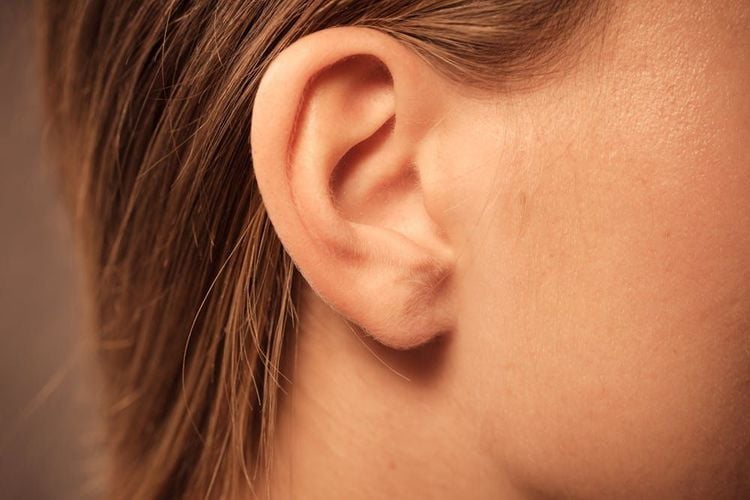
Examination of the tympanic membrane: Must know the shape, color, inclination of the eardrum, shape of anatomical landmarks, concave, bulge, perforation, or tear, to diagnose otitis media.
Normal tympanic membrane image: The eardrum is oval, glossy white like a garlic bulb. In adults, the eardrum is tilted 45 degrees to the vertical axis of the external ear canal. In this baby this angle is more than 60 degrees. Therefore, the tympanic membrane is difficult to see in this type of patient. During the eardrum examination we should ask the patient to close the nose, close the mouth and swallow saliva (Tone Bee test) to see if the eardrum is moving. We can replace this test by pumping air into the ear canal with Speculum Siegle. In the case of a diseased ear we will see a change in color, gloss, and tilt of the eardrum. In case of pus in the middle ear, the eardrum will be pushed out. Normal eardrum in each person can be different, so both ears must be viewed to have a basis for comparison. If the tympanic membrane is perforated, it is necessary to carefully examine the perforation, whether the membrane is tense or overlapping, the perforation morphology, single hole or many holes, size and close to the skeleton? Is the perforation margin smooth or jagged, and is there a polyp?
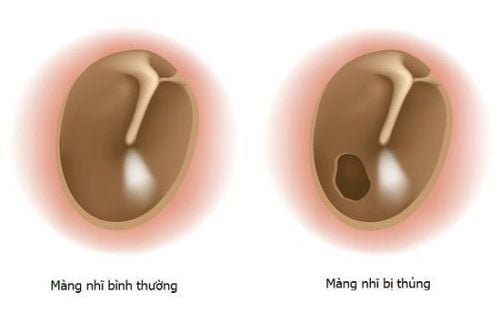
Examination of the Eustachian tube: There are many ways to test to see if the Eustachian tube is blocked.
Tone Bee test: tell the patient to close the nose, close the mouth and swallow, if the patient can hear the sound in the ear, the eustachian tube is open. Valsava maneuver: ask the patient to close the nose, close the mouth and blow hard to inflate both cheeks, if the patient hears a sound in the ear, the eustachian tube is open. Polizer test: ask the patient to take a sip of water, cover one nostril, the doctor uses a large rubber balloon to pump air into the other nose while the patient swallows water, if the patient hears ringing in the ear, it is Eustachian faucet. The Tone Bee test is the simplest test and is easily performed by the patient. Through this test, it is possible to detect blocked eustachian tubes and can help open the eustachian tubes effectively.
Vinmec International General Hospital is a high-quality medical facility in Vietnam with a team of highly qualified medical professionals, well-trained, domestic and foreign, and experienced.
A system of modern and advanced medical equipment, possessing many of the best machines in the world, helping to detect many difficult and dangerous diseases in a short time, supporting the diagnosis and treatment of doctors the most effective. The hospital space is designed according to 5-star hotel standards, giving patients comfort, friendliness and peace of mind.
Please dial HOTLINE for more information or register for an appointment HERE. Download MyVinmec app to make appointments faster and to manage your bookings easily.





